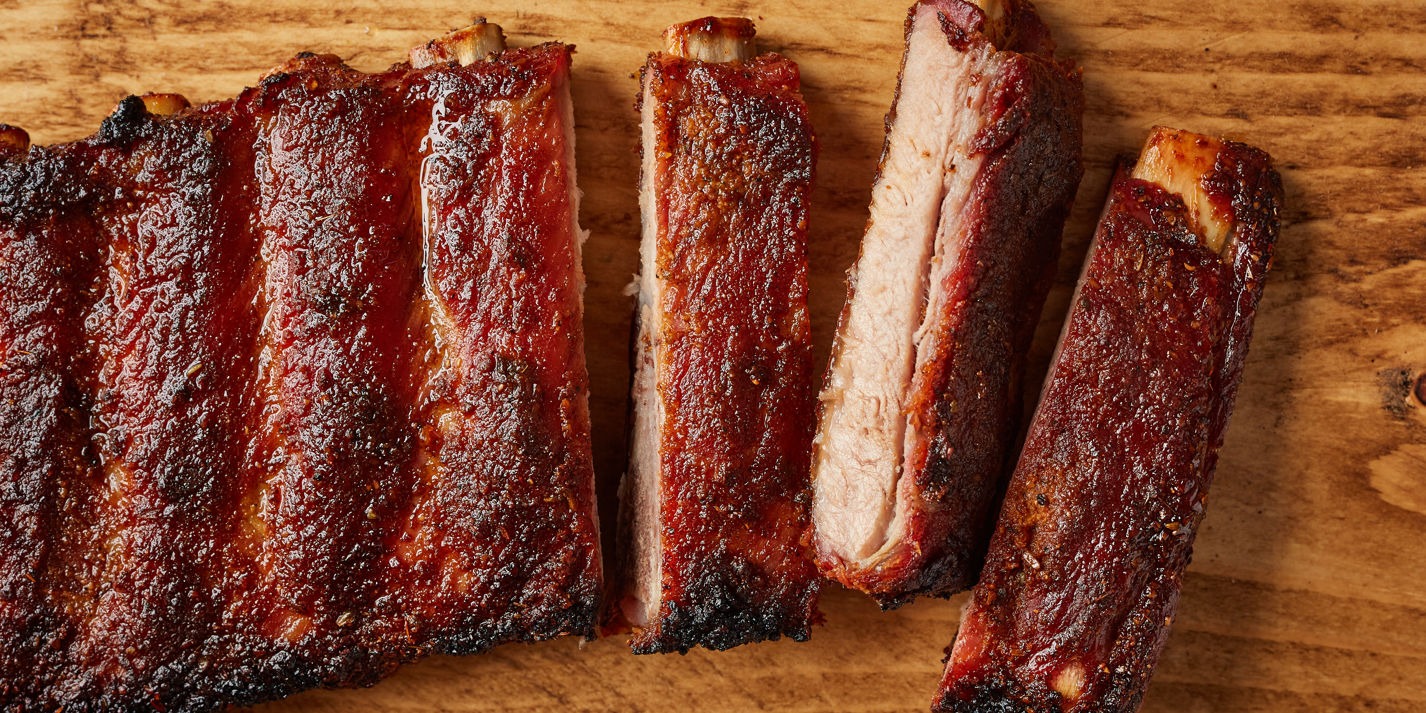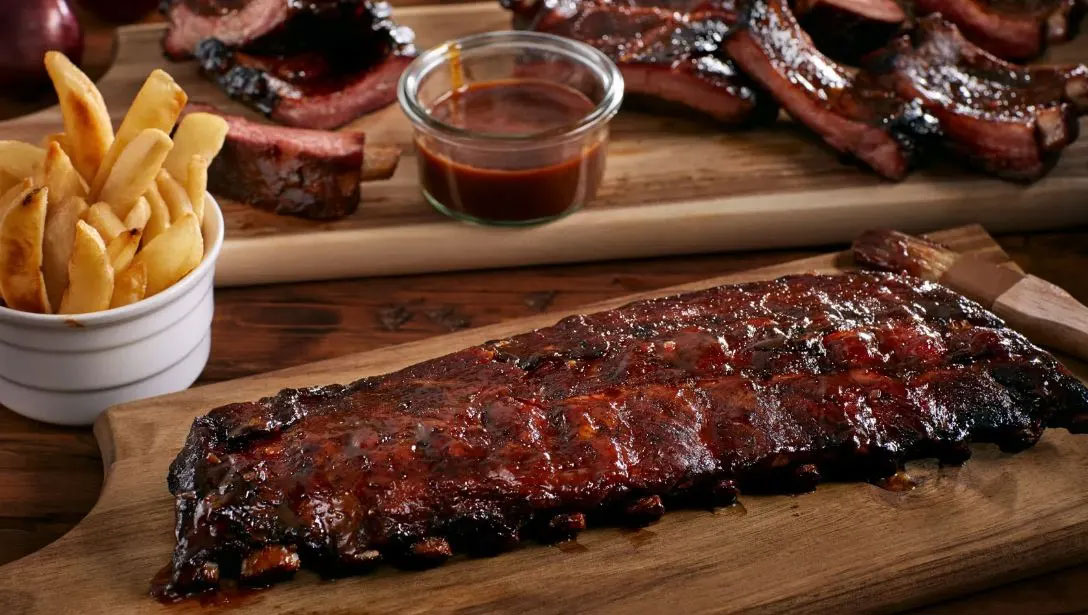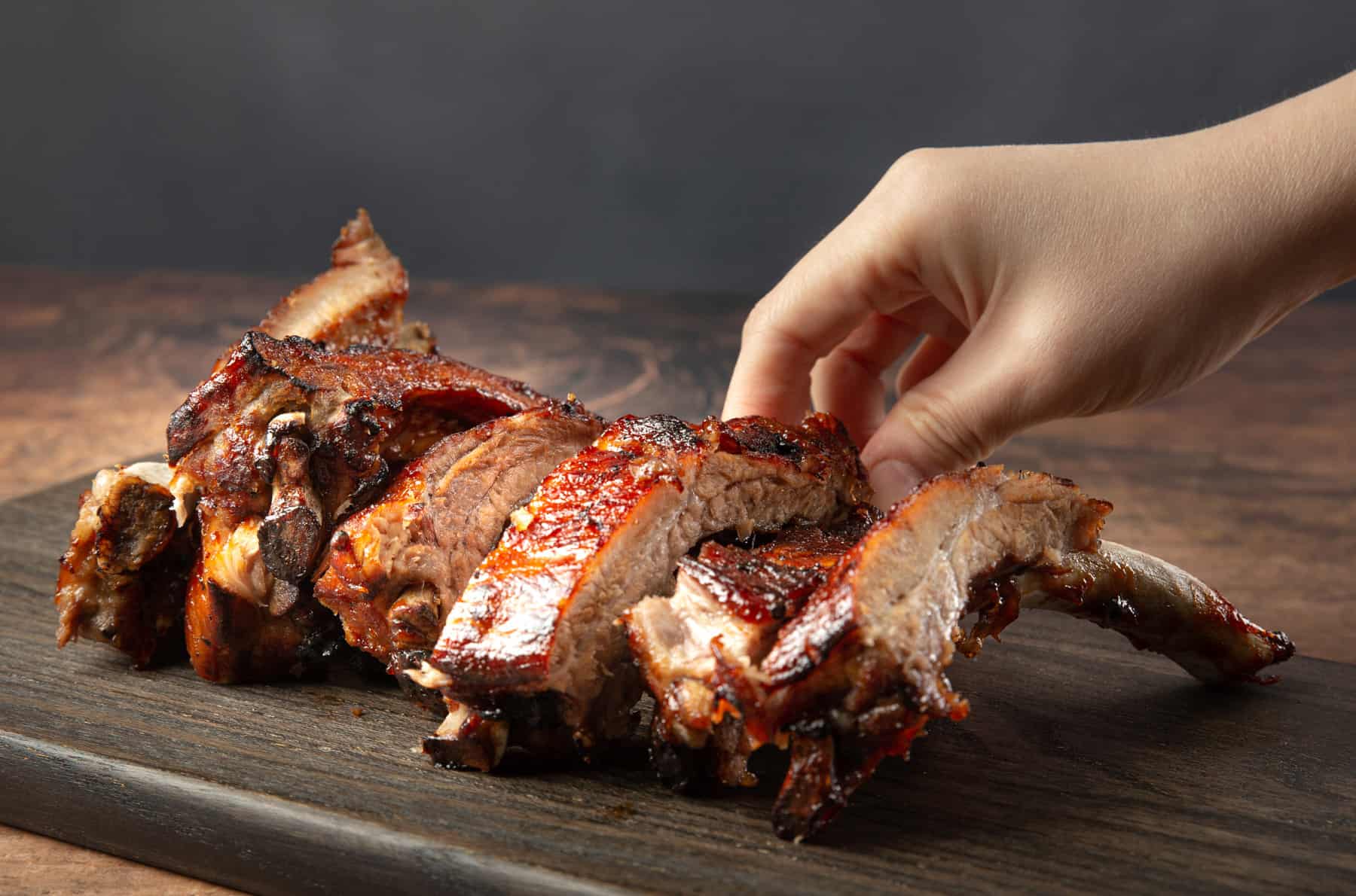Pork ribs, with their tender meat and rich flavor, have long been a favorite indulgence for meat lovers around the globe. Whether slow-cooked, smoked, grilled, or barbecued, pork rib offer a culinary experience that tantalizes the taste buds and satisfies the soul. Let’s embark on a mouthwatering journey into the world of pork ribs, where every bite is a celebration of savory delight.
Savoring the Succulence: Exploring the World of Pork Ribs

Pork Ribs
1. Varieties of Pork Ribs:
Pork ribs come in various cuts, each offering its own unique texture and flavor profile. The most common types include baby back ribs, spare ribs, and St. Louis-style ribs. Baby back ribs are leaner and more tender, with meat situated between the bones. Spare ribs are larger and fattier, with meat covering the bones and a richer flavor. St. Louis-style ribs are spare ribs trimmed into a rectangular shape for uniformity.
2. Preparation Methods:
Pork ribs can be prepared using a variety of cooking methods, each imparting its own distinct character to the meat. Popular techniques include slow-cooking, smoking, grilling, and braising. Slow-cooking or smoking over low heat for several hours allows the meat to become tender and infused with smoky flavor, while grilling over direct heat caramelizes the exterior and creates a delightful char.
3. Flavorful Marinades and Rubs:
Enhancing the flavor of pork ribs often involves marinating the meat or applying a dry rub before cooking. Marinades may include ingredients such as soy sauce, garlic, honey, and citrus juice, imparting depth of flavor and tenderizing the meat. Dry rubs, made from a blend of spices and herbs, add complexity and aroma to the ribs, creating a tantalizing crust when cooked.
4. Regional Specialties:
Across different cultures and cuisines, pork ribs are prepared in diverse styles, reflecting regional preferences and traditions. In the United States, barbecue hotspots like Texas, Kansas City, and Memphis are renowned for their distinctive approaches to pork rib, from dry-rubbed and slow-smoked to sauced and succulent. In Asia, countries like China, Korea, and Vietnam feature pork rib in a variety of dishes, from sticky-sweet char siu to spicy galbi and aromatic pho.

Pork Ribs
5. Culinary Versatility:
Pork ribs lend themselves to a wide range of culinary creations, from hearty mains to flavorful appetizers and finger-licking snacks. Whether served as a centerpiece dish at a barbecue feast, nestled atop a bed of creamy mashed potatoes, or paired with tangy coleslaw and cornbread, pork ribs offer endless possibilities for culinary creativity and gastronomic enjoyment.
6. Nutritional Considerations:
While undeniably delicious, pork ribs are also rich in fat and calories, particularly when prepared with added sauces or marinades. Moderation is key when indulging in pork rib as part of a balanced diet. Opting for leaner cuts, trimming excess fat, and incorporating plenty of vegetables can help balance out the meal and ensure a nutritious dining experience.
Pork ribs are more than just a dish; they’re a culinary adventure that brings people together to savor the simple pleasures of good food and great company. Whether enjoyed at a backyard barbecue, a cozy dinner party, or a bustling street food market, pork rib offer a delicious journey of flavor and enjoyment that transcends cultural wdbos boundaries and ignites the senses. So fire up the grill, gather your friends and family, and let the aroma of sizzling pork rib transport you to a world of culinary delight.
Exploring the Pros and Cons of Pork Ribs: A Culinary Delight with Considerations
Pork ribs, with their succulent meat and rich flavor, are a beloved dish enjoyed by many around the world. However, like any food, pork ribs come with their own set of advantages and disadvantages. Let’s dive into the strengths and weaknesses of this popular culinary delight.

Pork Ribs
Advantages:
- Flavorful and Tender Meat: One of the primary advantages of pork ribs is their rich flavor and tender texture. When cooked properly, the meat becomes melt-in-your-mouth delicious, offering a satisfying dining experience for meat lovers.
- Versatility in Cooking Methods: Pork ribs can be prepared using a variety of cooking methods, including grilling, smoking, roasting, and braising. This versatility allows for customization based on personal preference and culinary creativity.
- Culinary Creativity: Pork rib serve as a canvas for culinary experimentation, with endless possibilities for flavor combinations, marinades, rubs, and sauces. From sweet and tangy barbecue to spicy and savory rubs, there’s a pork rib recipe to suit every taste bud.
- Crowd-Pleaser at Gatherings: Pork ribs are often the star of backyard barbecues, family gatherings, and social events. Their hearty, finger-licking goodness brings people together and creates memorable dining experiences for all.
Disadvantages:
- High in Fat and Calories: While delicious, pork ribs can be high in fat and calories, particularly when prepared with fatty cuts or rich sauces. Overconsumption of fatty meats may contribute to health issues such as obesity, heart disease, and high cholesterol levels.
- Time-Consuming Preparation: Achieving perfectly cooked pork rib requires time and patience. Depending on the cooking method, ribs may need to be marinated, seasoned, and slow-cooked for several hours, making them less suitable for quick weeknight meals.
- Potential for Overcooking: Pork ribs can easily become overcooked and dry if not monitored closely during the cooking process. Achieving the ideal balance of tenderness and juiciness requires careful attention to cooking time, temperature, and technique.
- Environmental and Ethical Considerations: The production of pork ribs, like all meat products, has environmental and ethical implications. Industrial farming practices, including confinement operations and excessive use of antibiotics, can have negative impacts on animal welfare and the environment. Choosing sustainably sourced and ethically raised pork can help mitigate these concerns.
Conclusion:
Pork ribs offer a delectable dining experience with their flavorful meat and versatility in cooking methods. However, it’s essential to be mindful of their high fat and calorie content, as well as the time and effort required for preparation. By enjoying pork rib in moderation and opting for sustainable, ethically sourced ingredients, we can savor their deliciousness while maintaining a balanced and conscientious approach to our culinary choices.
Read More Article About “The Ultimate Guide to Sustainable Living“



